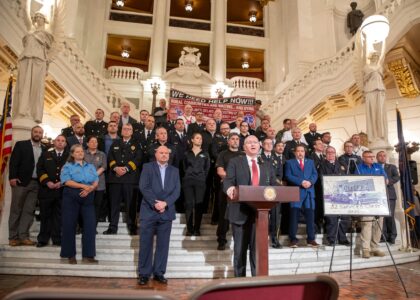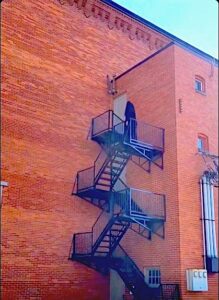Hammond Street to get CDBG funding
Council members push for economic development, housing priorities in future years
A second wave of Community Development Block Grant funding is being earmarked for the reconstruction of Hammond Street, though at least two City Council members want to examine economic development and housing for future CDBG-funded projects.
Council members discussed a revolution to appropriate $308,627 toward the Hammond Street project. That amount is all of the city’s 2025 CDBG allocation and, when combined with the 2024 CDBG allocation of $293,000, brings the project closer to full funding of $roughly $900,000. Melinda Byler, city finance officer, said the city’s 2026 CDBG allocation will also likely be allocated toward Hammond Street. The project won’t go out to bid until all of the funding is approved by the federal government. The concrete will be removed in place of black asphalt.
“Hammond Street is a concrete street,” said Mike Holtz, city manager. “The city’s gotten caught on Hammond Street for 20 years. It’s probably the third- or fourth-worst concrete street in the city. So, it is a good project. It’s just not an exciting project.”
Councilwoman Wendy McCain questioned why many CDBG projects in the city are focused on street improvements rather than economic development projects in areas that qualify for CDBG money. Byler responded that the Hammond Street project is a priority this year because one year of CDBG funding has already been approved, adding that the yearly public hearing required as part of the application filed each year with the federal Housing and Urban Development department is one way the public can suggest projects or funding priorities.
Projects funded with CDBG money must have at least 50% of the people or households it benefits have an annual income at or below 80% of the Area Median Income. For CDBG-economic development funds, at least 51% of created or retained jobs must be held by low- and moderate-income persons. Other requirements include adopting specific policies like those for anti-displacement and fair housing, ensuring citizen participation, and properly managing the funds to avoid exceeding the approved budget.
Holtz and Byler said it’s hard to find areas in Warren that fit the 51% low- to moderate-income qualification.
“You’re doing something with the funds, it’s a communitywide benefit,” Holtz said. “Unfortunately, the program won’t allow it. The good part about Warren is the city as a whole is above or is higher than a 51% low- to moderate (income level). So, the good news is we’re not that bad. The bad news is because of that limit you have to do site-specific projects. If you’re going to do a street or a sidewalk or any type of those things, you have to survey that specific area. Communities that are 51% or below, they can do many different opportunities, parks, playgrounds, handicap ramps. We just have struggled over the years to do that. And I guess the flip side of it is these projects, I know they’re expensive, and they’re not very fun.”
McCain suggested talking to other cities about how they use CDBG funding to generate ideas for new uses in Warren. She said the $900,000 the city will spend on Hammond Street could generate a large portion of an economic development project.
“We could (do that) and I think that’s a great question,” Holtz said. “You know we could email and pose that question. ‘Hey we’re not 51%. What are examples?’ Let’s email and ask that question and see what it produces.”
Councilman Jared Villella asked about using CDBG funding for housing projects, noting CDBG can be used for “decent housing.” One lot Villella suggested likely wouldn’t qualify for CDBG funding, Byler said, before Villella suggested another area.
“I can tell you West Fifth, upper West Fifth, there are some vacant properties up there that we could start building homes on,” Villella said. “I’m sure that meets the 51%.”
McCain asked about using CDBG money for roof projects in the city, though Byler said federal officials prefer to look at the house as a whole. Roof projects, she said, are likely to lead to more extensive housing projects and burn through the federal funding more quickly.
Council members also approved a HUD-required housing displacement policy.
“This is the HUD regulation,” Byler said. “We have to have this policy in place. But no, we have no current projects displacing anyone. So, we have to have this in place to get the funds for the last thing we voted on.”





